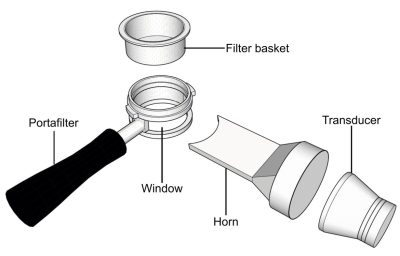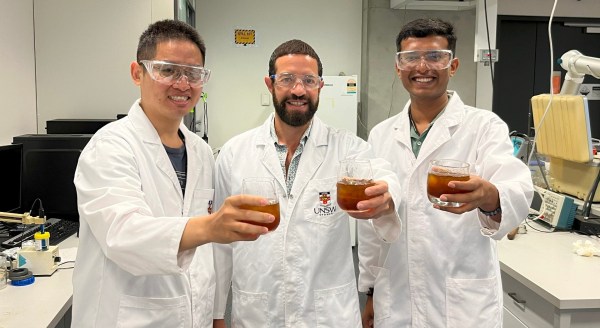Some coffee snobs might call this sacrilege. Cold brew is supposed to take a long time — that’s part of how it gets its characteristic smoothness. But a group of engineers from the University of New South Wales (UNSW Sydney) have figured out a way to cut the time down from several hours to a mere three minutes, using ultrasonic waves.
 Typically, the cold brew coffee process takes between 12 and 24 hours. Enough time to steep the grounds and extract the flavors without the benefit of hot water. This is how it differs from iced coffee, which is brewed hot and poured over ice.
Typically, the cold brew coffee process takes between 12 and 24 hours. Enough time to steep the grounds and extract the flavors without the benefit of hot water. This is how it differs from iced coffee, which is brewed hot and poured over ice.
Interestingly, the UNSW Sydney engineers’ process uses a typical prosumer-grade espresso machine and involves blasting the portafilter with a transducer and a horn. This transforms the coffee basket into a sonoreactor. Sound waves at a frequency of 38.8 kHz are injected at multiple points through the walls, generating acoustic cavitation within. You can read all about it in Ultrasonics Sonochemistry.
That’s not even the most exciting part. The study found that this arrangement is capable of doubling both the extraction yield and caffeine concentration, compared with non-soundblasted samples. The team sent samples of the coffee off to be evaluated on aroma, texture, flavor, and aftertaste. Although the one-minute extraction samples received similar ratings to a 24-hour brew in terms of flavor and aftertaste, they lacked the intensity and dark chocolate aroma of the longer brew. But the three-minute extraction samples scored quite highly in all areas, suggesting that the average cold brew drinker wouldn’t be able to tell the difference.
Would you like to roast your own beans at home? You can use a popcorn popper, but you might get tired of semi-uneven roasts and upgrade to a DIY wobble disk roaster.












